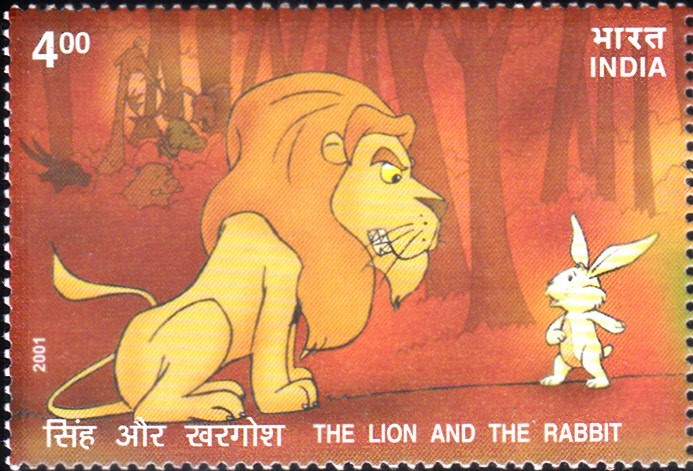
Stories from Panchatantra
Complete Set of 8 nos (setenant 4 pairs) of postage stamps on the Panchatantra, an ancient Indian collection of inter-related animal fables in Sanskrit, written by Vishnu Sharma :

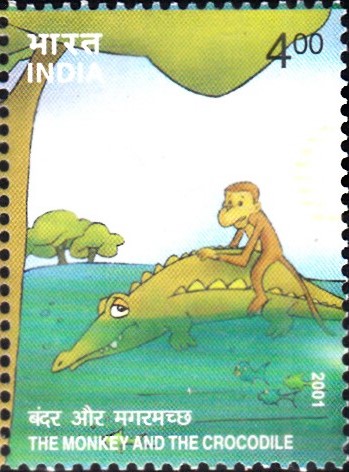
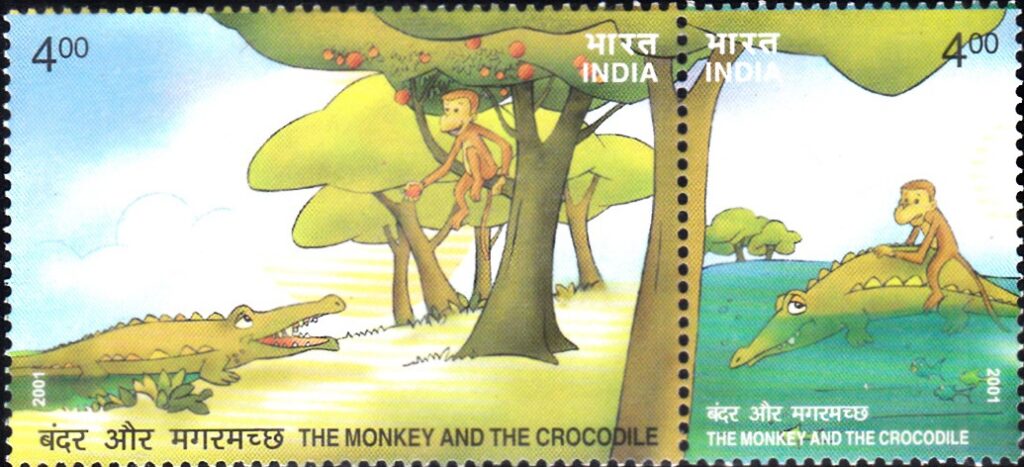


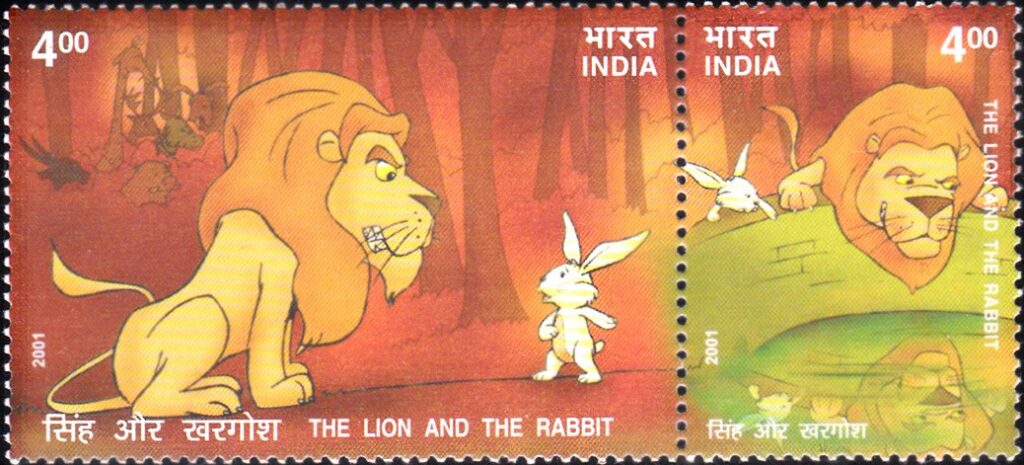
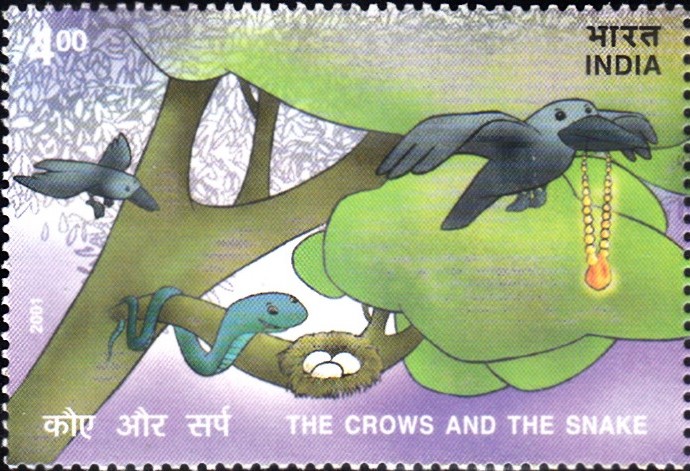
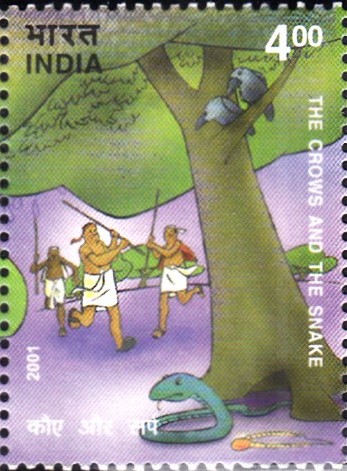
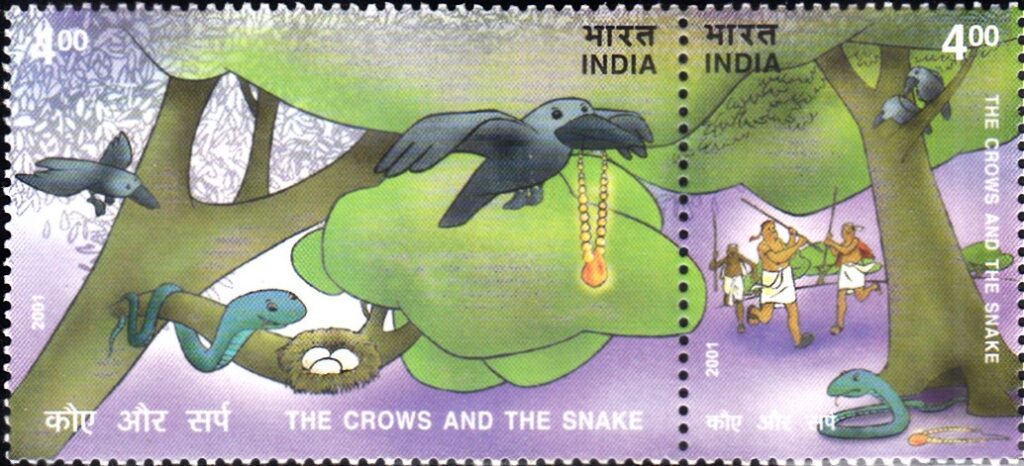

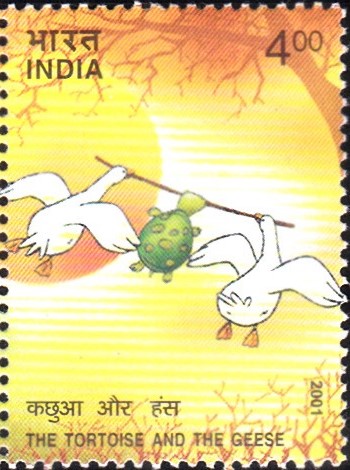
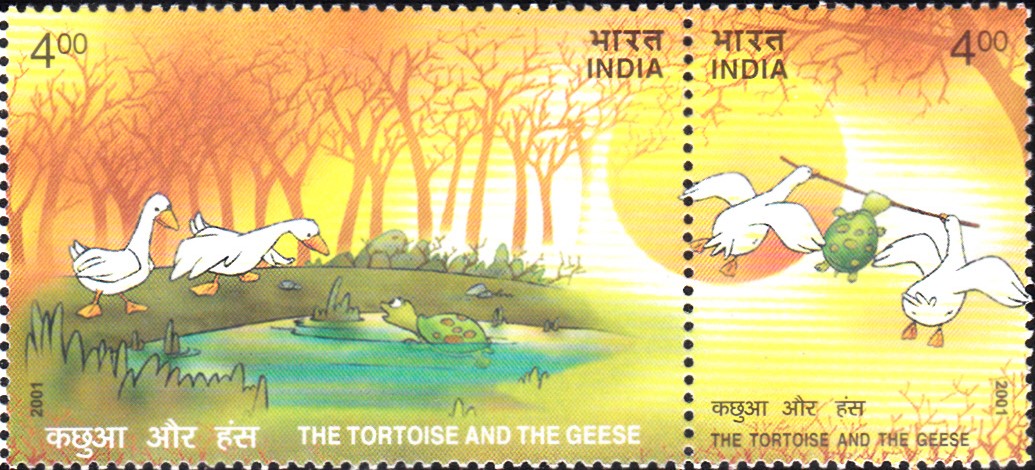 Issued by India
Issued by India
Issued on Oct 17, 2001
Issued for : The Department of Posts is happy to issue a set of stamps depicting four of the stories from the Panchatantra.
Credits :
Stamp & FDC : Kamleshwar Singh
Cancellation : Alka Sharma
Type : Stamps, Mint Condition
Colour : Four Colour
Denomination : 400 Paise each (4/Setenant)
Overall size : 3.91 x 8.7 cms. (Setenant)
Printing Size : 3.91 x 8.7 cms.
Perforation : 13 x 13
Paper : Imported Unwatermarked stamp paper
Stamps Printed : 3 million Each
Number per issue sheet : 18 Setenant
Printing Process : Photo Offset
Printer : Madras Security Printers Ltd.
About :
- The Panchatantra is an evergreen classic in the world of children’s literature. Widely attributed to Vishnusarman, a versatile teacher, the stories were originally written in Sanskrit probably around 500 A.D. Pancha means five and tantra means doctrines of conduct or modes of action. According to legend, a king who had three foolish sons engaged Vishnusarman to reform them and enable them to grow up into worthy adults. The teacher achieved this by weaving a wondrous world of fables which bought out the five tantras which were innate in them, namely, confidence, creation of prosperity, earnest endeavour, friendship and knowledge.
- The first stamp tells the story of the friendship between a monkey and a crocodile which turned sour when the crocodile fell prey to the evil influence of his greedy wife. The wife crocodile convinced the husband that she was ill and could be cured only by eating the heart of a monkey. Pretending to take him home for dinner, the crocodile got the monkey to travel on his back, but half way through the river he told him the truth. The monkey did not loose his presence of mind and replied that he had kept his heart safely in the tree on the river bank and he could happily give it to the crocodile if his wife needed it. The foolish crocodile turned back towards the river bank, where the monkey jumped off to safety.
- The second story is that of a vain but stupid lion whose downfall was brought by a crafty little rabbit. The big lion was mindlessly killing the animals of the jungle till one day when the rabbit informed him of the presence of another lion in the jungle. He could not tolerate a contender within his sphere of influence, and wanted to eliminate him. The rabbit took him to a well, where the lion could see his own reflection. Mistaking the reflection to be the second lion, he jumped on to it, only to fall into the water and drown.
- The third stamp illustrates how two crows who were helpless before a snake which preyed on their baby crows got rid of the menace by using their intelligence. The crows snatched a jewel necklace from the nearby village and dropped it next to the snake. The villagers had to kill the snake first to retrieve the necklace, thus making life easier for the crows.
- The fourth stamp depicts the story of a foolish tortoise whose ambition to fly was fulfilled by two geese who were his friends. The geese held a stick between their beaks and the tortoise held on to it with his teeth. However, while in flight, he forgot how precarious his position was and started to speak something. He lost hold of the stick and fell down to his death.
- The requirements and qualities of children’s literature are different from adult literature, in the same way as a child is different in his attitudes and responses from an adult. A fanciful story which entertains the child and stimulates his imagination is sure to find immediate favour with him. At the same time, good literature should also teach the child something – help him in some way to understand the norms of the society in which he lives. Panchatantra embodies all these qualities. It is therefore no surprise that it maintains its spell over the children of today as much as the pupils of Vishnusarman many centuries ago.
- Text: P.N. Ranjit Kumar



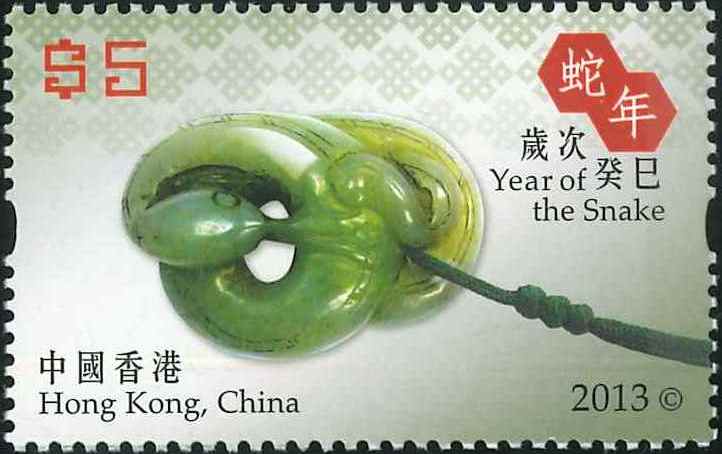



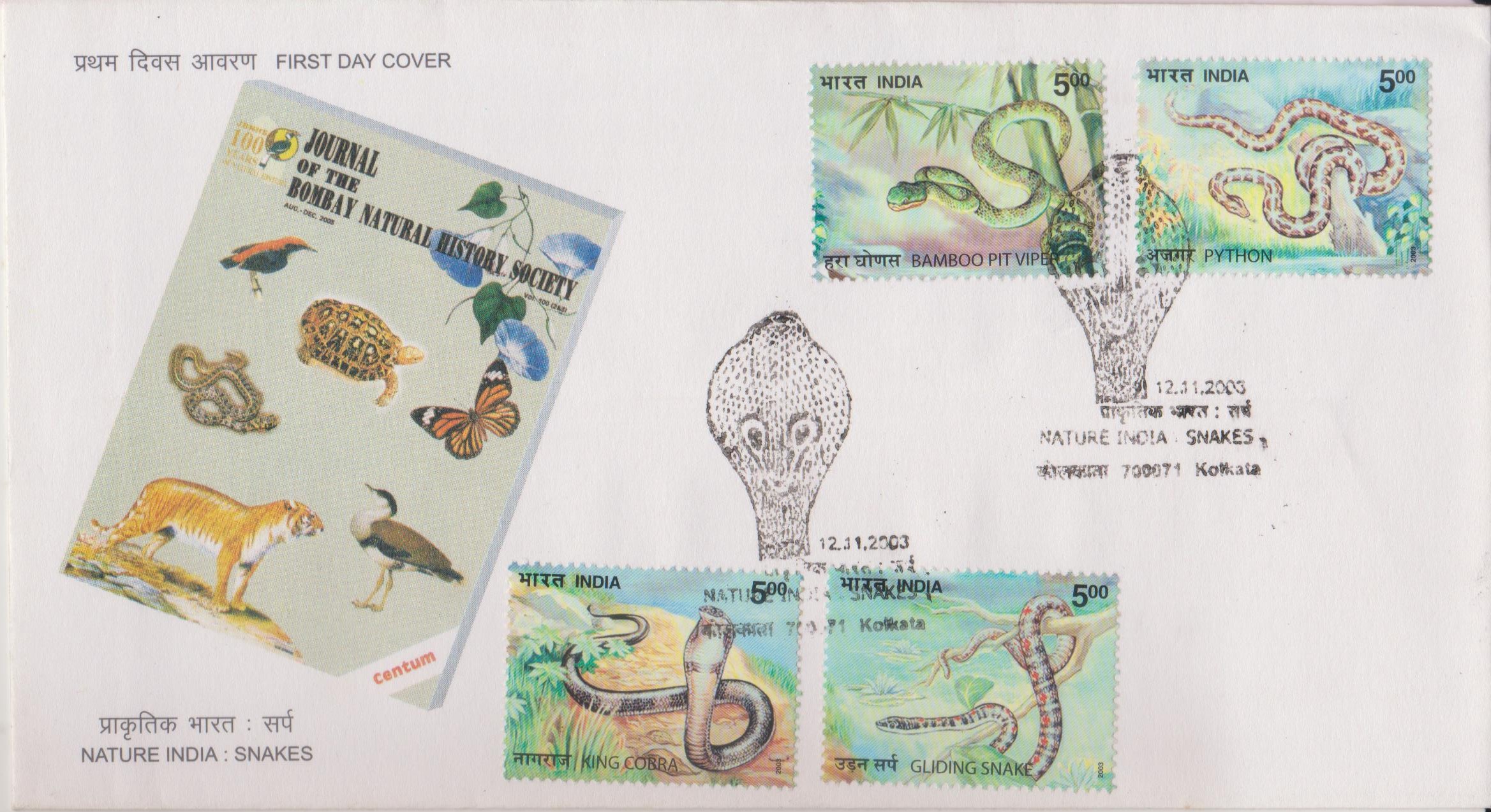
[…] Panchatantra, for instance, continues to fascinate writers and readers alike. The stories tell us in a lucid and […]
[…] India, the classic tales form ‘Panchatantra‘ and ‘Hitopadesa‘, ‘Ramayana‘ and ‘Mahabharata‘ and […]
[…] the Mahabharata, the Bhagavata Purana, as well as elements of older Hindu texts, such as the Panchatantra and the Kirātārjunīya. The Jain temple is only dedicated to a single Jina. A number of […]